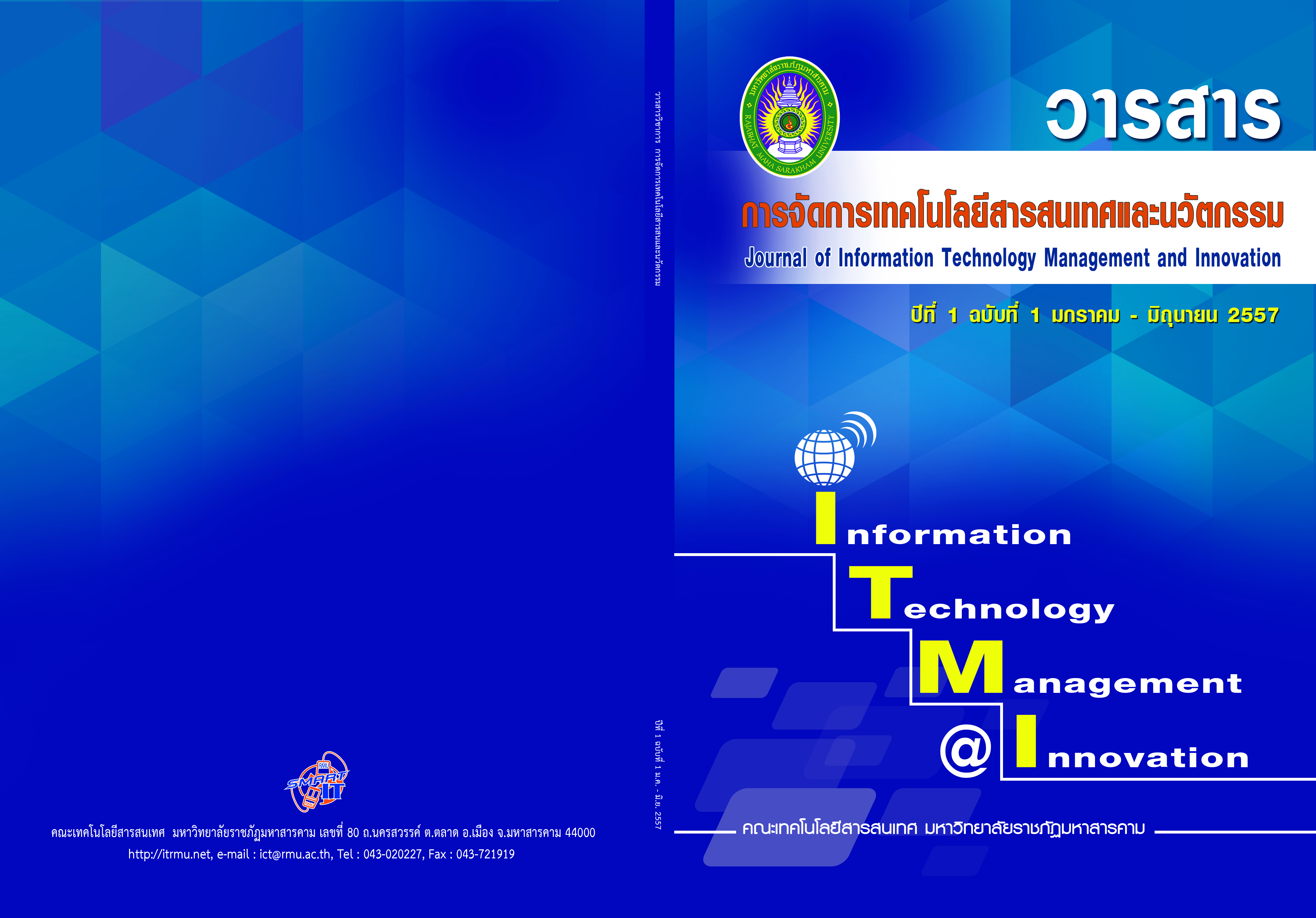Multivariate Analysis of Variance: MANOVA
Main Article Content
Abstract
การวิเคราะห์ความแปรปรวนหลายตัวแปร (MANOVA) เป็นเทคนิคทางสถิติแบบหนึ่งที่ใช้เปรียบเทียบความแตกต่างค่าเฉลี่ยของตัวแปรตามจำนวนหลายตัวแปรของกลุ่มตัวอย่าง หรือประชากรตั้งแต่ 2 กลุ่มขึ้นไป โดยการนำตัวแปรตามทั้งหมดมาจัดรวมกัน (combination) ทำให้เกิดการสร้างตัวแปรตามชุดใหม่ขึ้นมาจากชุดตัวแปรตามที่มีอยู่ก่อนแล้ว ก่อนการพัฒนาวิธีการของการวิเคราะห์แบบ MANOVA นักวิจัยนิยมใช้การเปรียบเทียบความแตกต่างค่าเฉลี่ยของตัวแปรตามทีละตัวแปร โดยใช้การวิเคราะห์ความแปรปรวน (Analysis of Variance : ANOVA) จึงมีการทดสอบทางสถิติหลายครั้ง เท่ากับจำนวนตัวแปรตาม อย่างไรก็ตามการใช้ ANOVA ดังกล่าว ในการทดสอบตัวแปรตามหลายๆ ตัวแปร ทำให้เกิดปัญหาในการเพิ่มค่าความคลาดเคลื่อนในการตัดสินใจประเภทที่ 1 (type I error) หรือค่าแอลฟาจริง (actual alpha) (ในทางสถิติเรียกค่านี้ว่า overall type I error) ตามหลักการ Bonferroni Inequality [1],[2] มีค่ามากกว่าค่านัยสำคัญทางสถิติที่กำหนดไว้ (คือค่า α)
การวิเคราะห์ความแปรปรวนหลายตัวแปร (MANOVA) มีข้อกำหนดหรือข้อจำกัดในการใช้ที่สำคัญหลายประการ ซึ่งนักวิจัยจำเป็นต้องตรวจสอบข้อมูลให้สอดคล้องกับข้อกำหนด ถ้าข้อมูลไม่สอดคล้องจะมีผลทำให้อำนาจการทดสอบ (power of the test) มีค่าลดลงหรือมีความน่าเชื่อถือได้น้อยกว่าการวิเคราะห์ความแปรปรวน (ANOVA) นอกจากนั้นถ้าผลการทดสอบทางสถิติมีนัยสำคัญ นักวิจัยต้องทำการทดสอบความแตกต่างค่าเฉลี่ยของตัวแปรตามทีละตัว เพื่อตรวจสอบว่ามีตัวแปรตามใดบ้างที่มีความแตกต่างจริงเกิดขึ้น อันเป็นผลมาจากตัวแปรอิสระ โดยจะต้องปรับค่านัยสำคัญทางสถิติ (ค่า α) เดิมที่ใช้ให้มีค่าเหมาะสมตามหลักการ Bonferrni Correction เสียก่อน
Article Details
References
[2] Stevens,J.R. (2009). Applied Multivariate Statistics for Social Sciences. New York: Routledge Tayler Francis Company.
[3] Dancy,C.P. and Reidy, J. (1999). Statistics without Maths for Psychology:Using SPSS for Windows. New York: Prentice-Hall.
[4] Andersen, R.L. (1997). Practical Statistics for Analytical Chemistry, New York: Van Nostrand Reinhold Company.
[5] Freund,R.J.,Wilson, W.J. and Mohr,D.L.(2010). Statistical Methods.3rd editon, London: Academic Press.
[6] Olson,C.L. (1974). Comparative Robustness of Six Tests in Multivariate Analysis of Variance. Journal of the American Statistical Association, 69, 894-908.
[7] Milton,J.s.(1992).Statistical Methods in the Biological and Health Scienecs.2nd edition New York: Hill Book company.
[8] Dixon,W.J and Messey,F.J. (1993). Introduction to Statistical Analysis. London: McGraw-Hill Book company.
[9] Ott,R.L.and Longnecker, M. (2001). An Introduction to Statistical Methods and Data Analysis. 5th edition, Singapore: Duxbury Thompson Learning.
[10] Brace,N., Kemp, R. and Snelgar R. (2006). SPSS for Psychologists: A Guide to Data Analysis Using SPSS for Windows. 3rd editon, London: Laerence Erlbrum Associates Puvlishers.
[11] Johnson,D.E. (1998). Applied Multivariate Methods for Data Analysis, New York: Duxbury Press.
[12] Todman, J. and Dugard, P. (2007). Approaching Multivariate Aratysis:An Introduction for Paychotugy. New York: Paychotugy Press.


